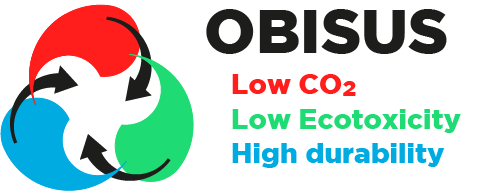OBISUS is a proposal planning an ambitious investigation focused on the field of sustainability applied to the basic building materials (cement and concrete). OBISUS has been designed in the form of a coordinated proposal by linking three independent groups developing their respective activities at the Eduardo Torroja Institute -CSIC- (SP1 and coordinator), at the Polytechnical University of Catalonia (SP2) and at the University of Cantabria (SP3).
The main hallmark characterizing OBISUS is the certainty that sustainability is a challenge that does not admit longer delays despite the many barriers of knowledge, still to be overcome.
Cement is an essential material in people’s lives. Houses, schools (buildings in general) are built with this material; communication routes, water channeling, etc., depend on the availability of cement; however, the way in which cement is currently produced and marketed, is clearly unsustainable. In other words, this material is responsible for very high CO2 emissions; it is not long-term durable if compared, for example, with the cements/concretes made by the Romans; and additionally, almost nobody was busy studying the impact that cement exerts on soils or marine environment.
In this scenario, OBISUS is proposing a large number of specific objectives (with their corresponding working tasks) that, after being analyzed together, we believe they will lead to us to a sustainable building material, alternative to conventional Portland cement. The proposed novel cement will have the additional important feature of fitting relatively easily into current regulations, which are mandatory in the European zone. In short, OBISUS will address simultaneously, from three different perspectives (three independent subprojects but harmonized around a common general objective) the following challenges located at the frontier of knowledge:
- Propose a manufacturing process (at laboratory level) alternative to the conventional one (Portland cement). Through this process an alternative cement will be produced. It will involve a significant reduction in GHG emissions with respect the conventional cement and it will maintain or even improve the fundamental properties characterizing those cements commonly used in the construction sector;
- Determine, exhaustively, the durable characteristics of the proposed alternative cements, and propose to subproject 1 specific actions in order to improve/optimize the analyzed durable properties;
- Explain, reasoned and exhaustively, the eco-toxic characteristics of the alternative cement proposed in the project, taking into account that subproject 1 (linked to the production process) raises the possibility of using a considerable amount of wastes from a number of different sources (industrial, mining, agricultural, etc.)
